Recent Articles
Popular Makes
Body Types
2018 Ford EcoSport vs. 2018 Ford Escape: Which is for you?
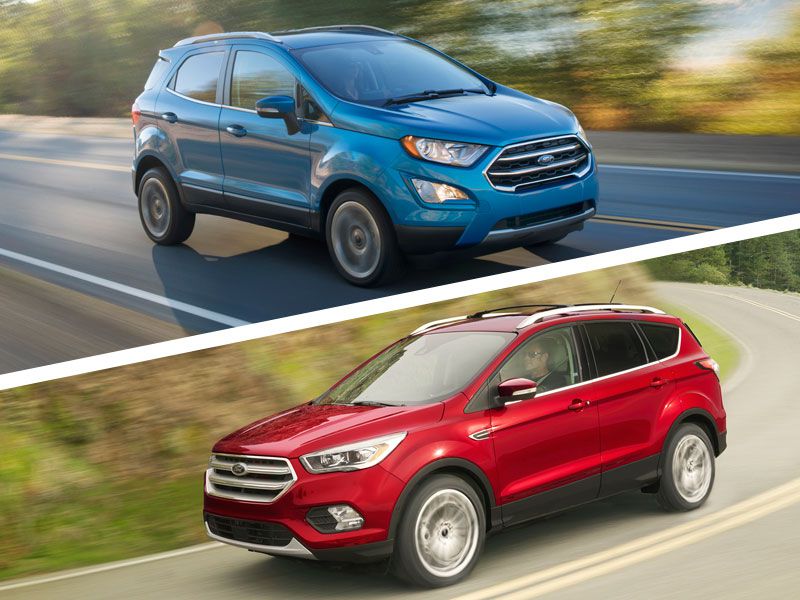
2018 Ford EcoSport vs Ford Escape ・ Photo by Ford
The 2018 Ford Escape and the all-new 2018 Ford EcoSport are two crossover options that appeal to two different customers. Both offer room for five passengers with ample cargo capacity and a range of trims and engines, but there are key differences between the two.
The Escape has been a staple of the Ford lineup for years, while the new EcoSport offers a smaller footprint and its own unique benefits. Let’s take a closer look at the 2018 Ford Escape and 2018 Ford EcoSport and see which is the best one for you.
Pricing and Trims
The Ford EcoSport is available in four trims starting with the base S at $19,995 and topping out with the Titanium at $25,880. The standard engine is a mild-mannered turbocharged 1.0-liter three-cylinder engine with the option for a larger 2.0-liter four-cylinder that is standard on the sporty SES trim or any model with all-wheel drive.
The Ford Escape also comes in four trims ranging from $23,940 to $32,140. It features a choice of four-cylinder engines: a 2.5-liter on the base trim with a turbocharged 1.5-liter for middle trims and a turbocharged 2.0-liter for the top Titanium. Despite the greater range of engine choices, the EcoSport comes out ahead for its better affordability, even in upper trim levels.
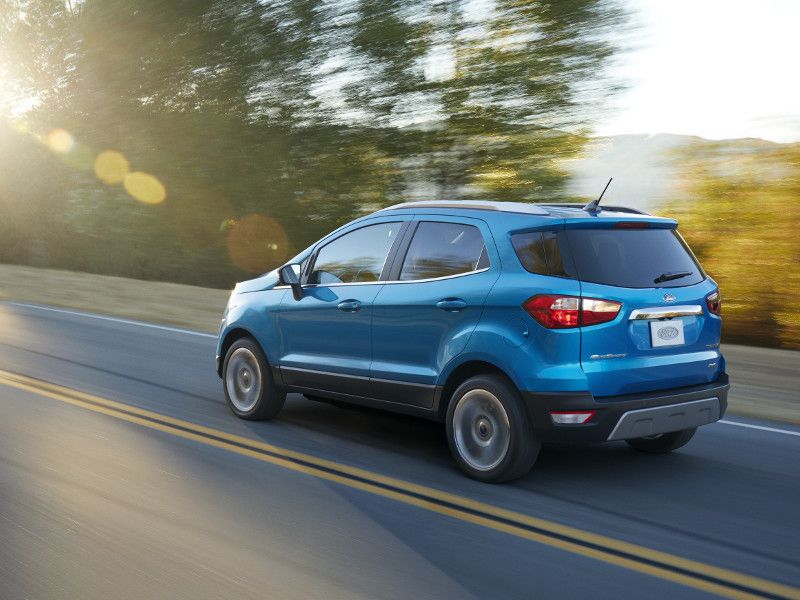
Photo by Ford
Safety
The National Highway Traffic Safety Administration gave the EcoSport with all-wheel drive an overall four out of five stars, with individual four-star ratings in frontal and rollover tests and a five-star rating in side crash tests. Front-wheel drive models received the same overall rating, but with three stars for rollover risk. The Escape in both front-wheel and all-wheel drive models received a five-star overall rating with an individual four-star rating for rollover risk.
The Insurance Institute for Highway Safety hasn’t crash-tested the EcoSport, but it gave the Escape its highest rating of Good in most crash tests. However, for small-overlap frontal impacts, it slipped to Acceptable for protection to the driver’s side and Poor on the passenger side.

Photo by Ford
Styling
These are both Ford products, so they show off similar styling cues. Even though they look like they’re from the same company, as they should, there are differences between the two. Both have that wide Ford grille and are crossovers, but that’s where similarities end. The EcoSport is smaller with a somewhat chopped rear end that makes it look more like a hatchback than an SUV.
The Escape is longer, which makes it more elegant with a sloped roofline that ends less abruptly than the EcoSport. Instead, it tapers back to look like a crossover with just a touch of hatchback. It’s more stylish and more appealing to our eyes than the shorter, boxier EcoSport.
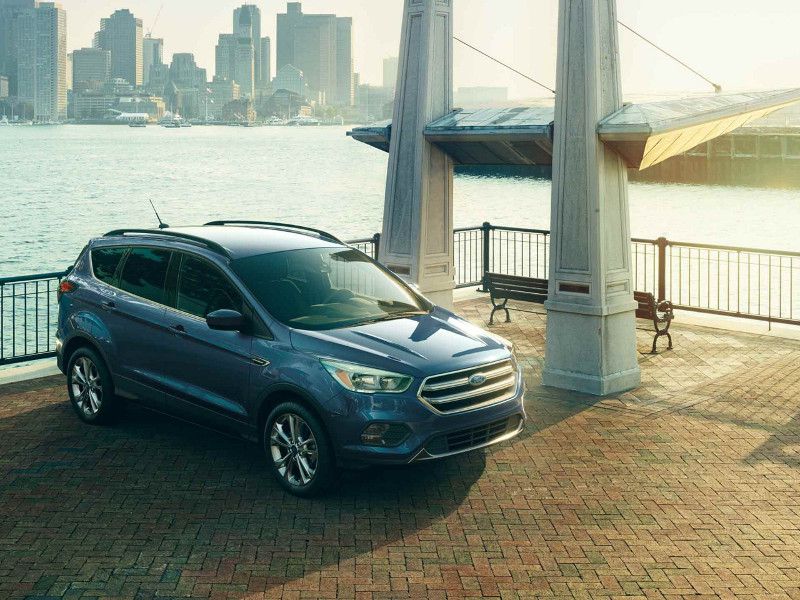
Photo by Ford
Seating
Both crossovers offer seating for five with manually adjustable, fabric-covered seats on base trims. Top trims get leather seating surfaces and power adjustability, with the Escape offering a 10-way power driver’s seat while the EcoSport has only six-way power adjustability.
As for roominess, the EcoSport has 39.6 inches of headroom in the front seats and 37.5 inches in the rear. The Escape offers 39.9 inches in the front seats and 39 inches in the rear. Legroom is also greater in the Escape with 43.1 inches in the front row and 37.3 inches in the second row versus the EcoSport with 42.9 inches in the front row and 36.7 inches in the second row.
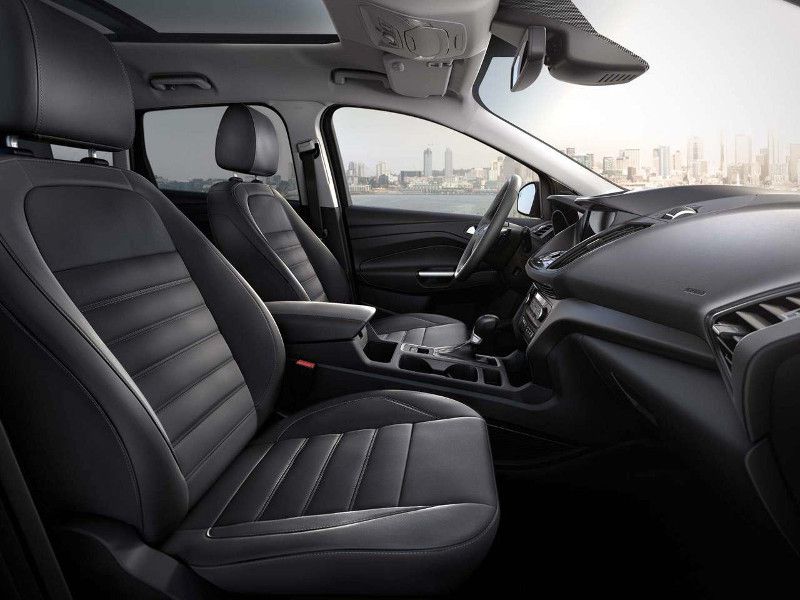
Photo by Ford
Infotainment
The base EcoSport comes with AM/FM/MP3 and a six-speaker audio system with Ford's Sync system. Stepping up to the SE and SES adds the more advanced SYNC 3 and SiriusXM satellite radio with the option for a seven-speaker system, SYNC Connect, navigation, a Wi-Fi hotspot, and an 8-inch color touchscreen. The top Titanium makes all those features standard along with a nine-speaker B&O audio system.
The Escape features similar packaging with the addition of a CD player and voice recognition to its base model, and the option for SYNC 3 on the SE and standard SYNC 3 on the SEL and Titanium. The top Titanium also has a standard 10-speaker Sony audio system. While the two crossovers have similar features, the EcoSport lets you get higher-range infotainment features in lower-trim models.
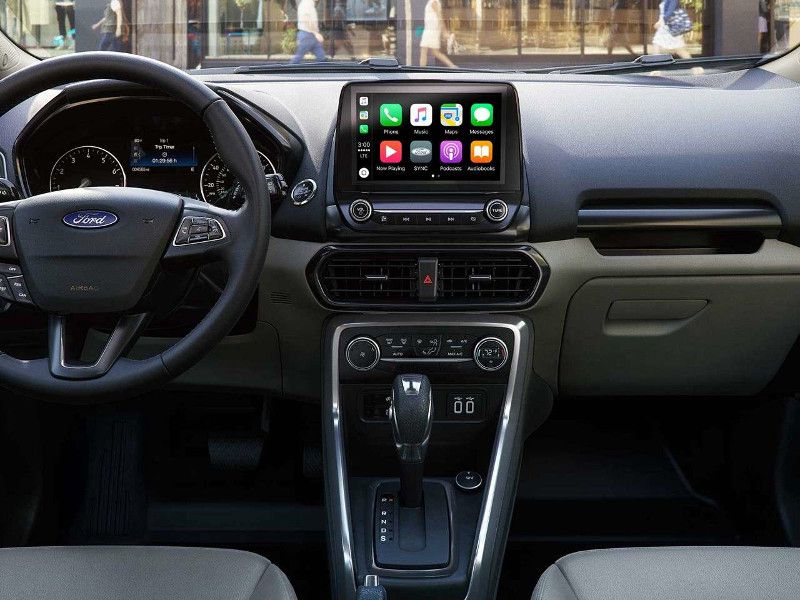
Photo by Ford
Performance
The EcoSport offers two engines. The first is a 1.0-liter turbocharged three-cylinder with 123 horsepower and 125 lb-ft of torque that's standard on the S, SE, and Titanium. There’s an optional 2.0-liter four-cylinder with 166 horsepower and 149 lb-ft of torque, which is standard on the SES only and bundled with all-wheel drive as an option on other trims.
The Escape has three engines starting with a 2.5-liter four-cylinder with 168 horsepower and 170 lb-ft of torque on the base S trim. The SE and SEL get a 1.5-liter turbocharged four-cylinder with 179 horsepower and 177 lb-ft of torque. Finally, there’s a 2.0-liter turbocharged four-cylinder with 245 horsepower and 275 lb-ft of torque only on the top Titanium.
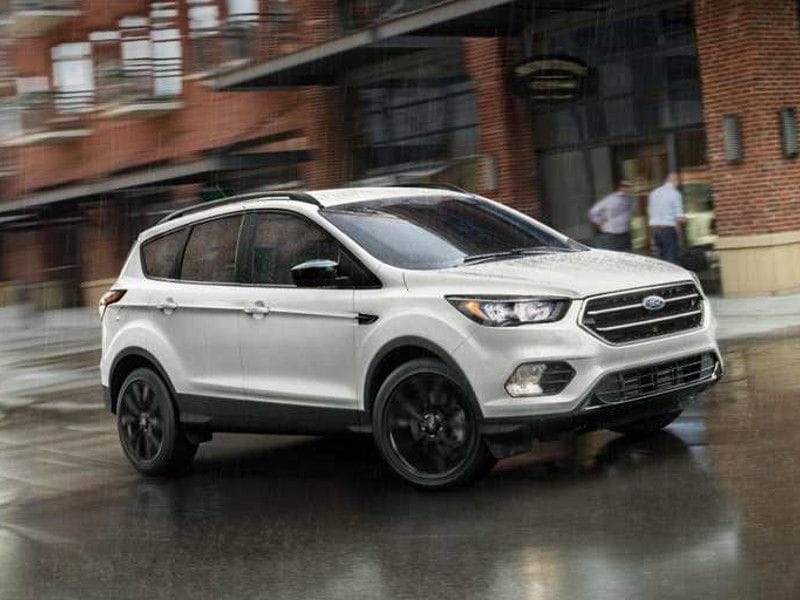
Photo by Ford
Fuel Efficiency
The 2018 Ford EcoSport gets an EPA-estimated 23 mpg in the city, 29 mpg on the highway, and 25 mpg combined in all-wheel drive models, which are equipped with the 2.0-liter four-cylinder engine. The three-cylinder engine, offered only with front-wheel drive, gets an EPA-estimated 27 mpg in the city, 29 mpg on the highway, and 28 mpg combined.
The Escape posts less impressive numbers. The best fuel economy comes from the 1.5-liter engine with front-wheel drive, which gets an EPA-estimated 23 mpg in the city, 30 mpg on the highway, and 26 mpg combined. That barely outdoes the EcoSport with the 2.0-liter engine and all-wheel drive. Efficiency falls even further if you choose the 2.5-liter or 2.0-liter engine.
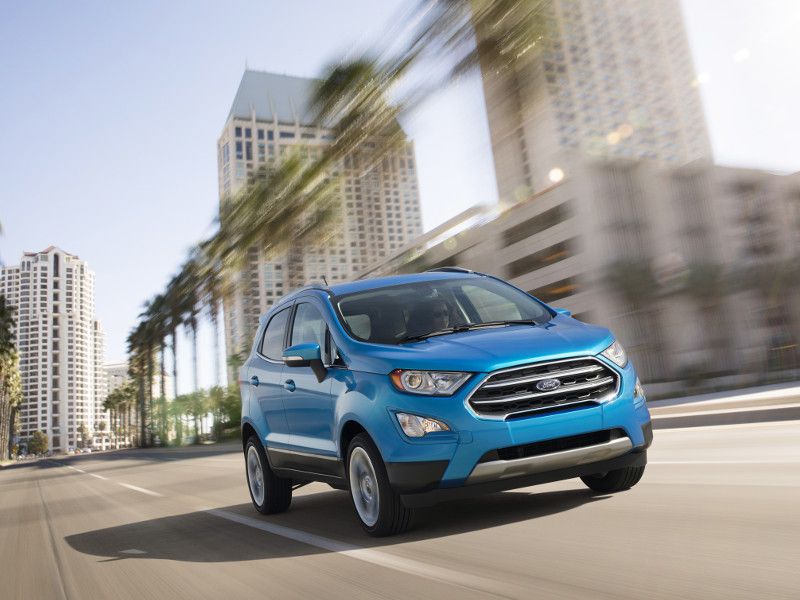
Photo by Ford
Cargo Capacity
The beauty of a crossover is its ability to carry both people and cargo. The EcoSport has 20.9 cubic feet for cargo behind the second row or 50.0 cubic feet behind the front seat when you fold down the 60/40 split-folding rear seat.
The Escape easily beats the EcoSport which much more room for cargo. There’s 34.0 cubic feet behind the second row or 68.0 cubic feet behind the front seats. If you plan on carrying large amounts of cargo, then the Ford Escape comes out way ahead.
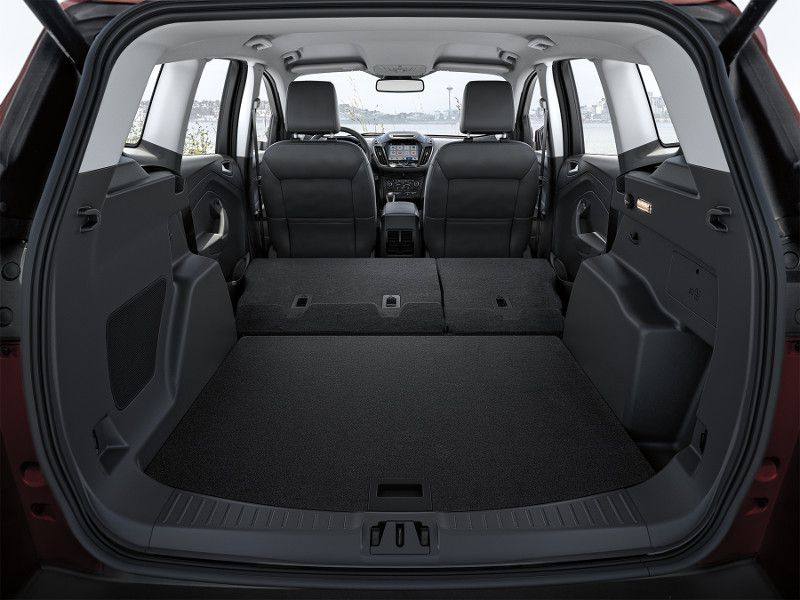
Photo by Ford
Towing
While those who need heavy-duty towing capability will need to look for larger vehicles, both the Escape and the smaller EcoSport can still handle a trailer. This is especially useful for the EcoSport since it has a smaller interior cargo area that might not accommodate all your cargo needs.
The EcoSport can tow up to 2,000 pounds, while the Escape can tow up to 3,500 pounds. This leaves the Escape ahead on cargo once again with both more interior cargo room and the ability to tow more additional stuff if there’s not enough room inside or the cargo is simply too large.
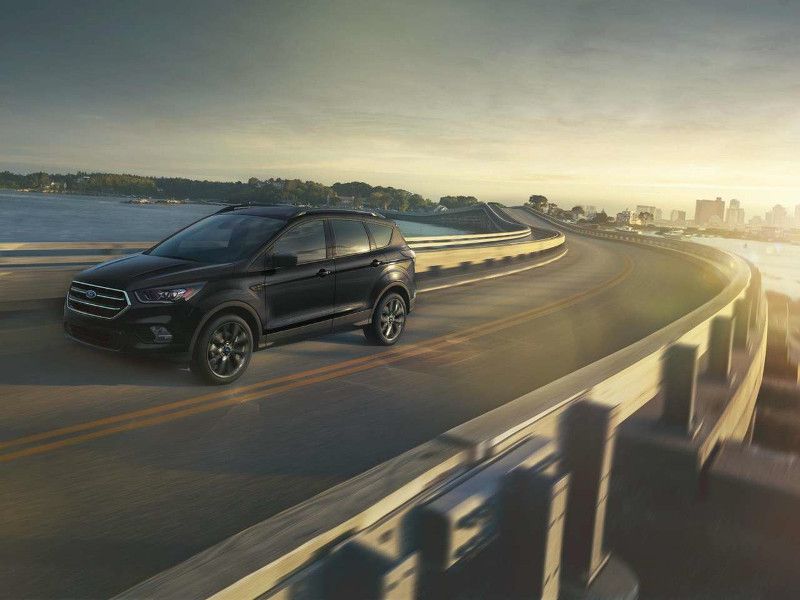
Photo by Ford
Overall
The EcoSport is a newcomer to the Ford lineup and it offers a smaller, more affordable alternative to the Escape. It also boasts better fuel efficiency.
It has better styling, stronger engines, more cargo space, and more towing capacity. It also comes out ahead of the EcoSport on safety and has more room for passengers, so fitting three adults in the rear seat is a more realistic option. The EcoSport is a good choice if you’re on a tight budget, but the Escape offers tempting qualities if you're comfortable spending more.

Photo by Ford